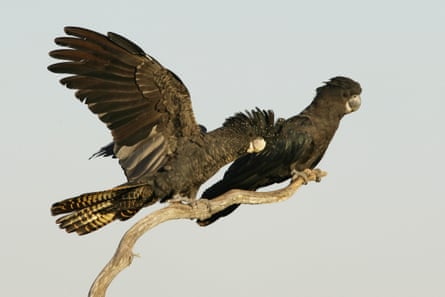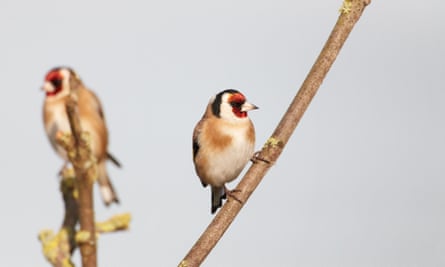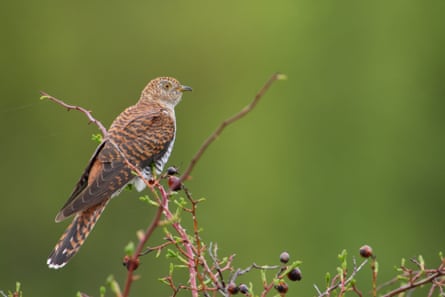London midwinter, and I dream of black cockatoos. Dreams lacking vision, sonic dreams of startling intensity. At dawn the rusted-hinge sound of the cockatoos swerves away, revoked by the thin daylight.
I have been based out of the UK for several months. Having passed through a blue solstice into January, the news bulletins from Australia chronicle unprecedented fire fronts, razing tracts of the eastern seaboard to ash. Columns of smoke expunge the stars. I see that in only the barest elements of topography and geology will the landscapes I return to resemble the places I left.
That a disaster staged over 30m hectares should be delivered in the palm-sized dimensions of online media seems both to spotlight the enfeebling structures of contemporary technology and to recall bygone catastrophes, minced through antiquated modes of communication.
Inch by inch, the immensity of the incineration is disclosed by pull-refreshing my feeds. I think of battle fatalities relayed by fax, or reports of a hurricane’s deadly landfall, fragmented into telegrams. But maybe this is the nature of all truly modern disasters: the scale of the destruction proves so singular it exceeds the architecture required to describe it.
Later I will recognise the subtext of that nightly soundtrack of elusive cockatoos. Where the peeping of songbirds ushers in the changing season across much of Europe, conventional wisdom holds that in Australia a black cockatoo’s squalls foretell of a more immediate shift in the weather – the parrots cry out before a storm. If there is truth in this claim it may be because the cockatoos mean to gather and strip tree bark softened by passing showers. Some eat grubs, which they dislodge from the sapwood using their beaks like secateurs. But it might also be that the cockatoos’ voices only sound louder fenced in by low, dense rainclouds – the surrounding conditions, then, not the birds’ calls, herald a storm.
Either way, as summer glared on who wasn’t pinning their hopes on a downpour? As the months went by, glossy black cockatoos were beginning to appear in Melbourne, where they hadn’t been seen for more than 150 years. The cockatoos had flown further than 400km from the fire-ravaged town of Mallacoota, searching for trees with seeds the birds eat. They may have proved a marvel to those who glimpsed them in the outer suburbs – a flash of orange tail plumage overhead – but the cockatoos’ arrival signalled tribulation elsewhere. So many blackened birds, set alight or suffocated on the wing, washed up on the coastline along east Gippsland: smudges of colour in scorched debris. Seagulls feasted on dead honeyeaters while the burnt-out bushland fell silent.

As the vegetation comes back, its sonics will be different. The voices of magpies repeat the sirens of fire trucks, while lyrebirds have been heard emulating the engine-chuff of heavy vehicles rolled in to clear smouldering timber. Raptors have done well off carrion, though their populations will begin to starve (or relocate) because of the decline of ground-dwelling mammals. In time, the first birds to thrive in the regrowth will be hardy and versatile – likely those omnivorous species capable of surviving off a range of plants and varied bugs. Endemic birds that feed in mature trees will fare badly, as will those that rely on larvae, caterpillars and worms since fried in the topsoil.
More broadly, the loss of insect biomass will effect pollination, and a deficit of herbivorous animals may advantage plants that were previously checked by their grazing appetites. Invasive, fast-germinating weeds inundate the cradles of slow-to-bud “reseeders” like banksias. Today, volunteers uproot the leggy invaders, gardening the wild. But the flora that springs back will inevitably create new and different niches for birds. Even after the greenery returns, this bushland will not sound as it once did.
***
In the early weeks of the Covid-19 lockdowns, people in London reported noticing more birdsong. Stood in the cool of walled gardens and up on tower-block balconies, or during daily, state-sanctioned jogs, Londoners found the dawn chorus unusually – remarkably – loud. “An orchestra of therapy,” the naturalist Chris Packham declared on the BBC’s Springwatch, his palms turned upwards in a saintly gesture to the green canopy above. Not only in the English capital, but all around the United Kingdom a dormant curiosity for birds was unfolding.
Birdwatch Ireland announced its web traffic was up 350%. Online sales of wild-bird food and little suet balls spiked. Near where I was staying, wire bird feeders appeared like devotions from a resurrected festival; you saw canisters of seed strung up on rooftop washing lines, along the eaves of locked shops, and in alcoves beneath overpasses. Bookstores ran low on field guides.
Whether there were, in fact, more birds to hear was an open question. It was logical to suppose that a boom in bird numbers might track the suppression of commerce, but the precise workings of that consequence were uncertain. Were these countryside birds, emboldened by the motionless streets to join their urban brethren, shillyshallying in the ivy? Were more eggs laid and fledglings brooded in borough treetops now that the roaring roads were lulled? With no evidence to corroborate these speculations, their appeal nonetheless summoned the pandemic’s nascent zeitgeist.

Each day that I queued for groceries – in Tower Hamlets, a neighbourhood with one of the highest death rates in the country – my eye snagged on a child’s careful, open-handed printing. Mother Earth draws a breath: the caption on a drawing, taped to the store’s frontage. Around a crayon planet, little cars drifted off into outer space. The bird thing, it was a recovery fantasy, one among many that the city nurtured as the shutters came down and the face masks went on. If death meant to take a seat at the table every night, frightening the children, then what else did we have to offer but a fable of nature’s resurgence? Beyond the window, see there, hopping about: so many birds.
If you had been, before now, a person who identified as a twitcher, you might have observed that these springtime months are always marked by an influx of migratory species flying into Britain from sub-Saharan Africa and southern Europe. Turtledoves, pipits and nightjars, martins and warblers come wheeling in on the ocean breeze. The British public pin the calendar on hearing the first moot-moot of a cuckoo, and people celebrate the day, months later, when the earliest swifts are sighted.
By mid-May a new grammar of movement animates the roadside. Hedges pop with flycatchers and finches, their tiny hearts zinging left and right like mustard seeds flung into hot oil. On the canals, waterfowl unzip the reflected sky, while swallows settle the tally of their ascension on the powerlines. Blank space everywhere – the open air, a lake’s glassy surface – gets hatched and crosshatched, iteratively, by feathered life.

These journeying birds, pouring in from thousands of miles away, arrive full-throated with a repertoire of courtship songs; it is their breeding season. Spring is bookended by the appearance of new species and on this account, it seems, the English year surges forwards by force of avian momentum – as though the birds didn’t follow the weather, but delivered it. And perhaps this was a part of it too – the burgeoning enthusiasm for birds and birdsong in 2020. Now that the days felt shapeless, the future stalled or upended, people hungered for visible propulsions of time in nature, to which the comings and goings of birdlife could be recruited.
So, yes, there were more birds to hear in London during lockdown, but no greater flourishing of their populations than usual. It was the context that had changed. Interviewed by reporters, acousticians noted that the birdsong might only sound louder this year because the background grind of machines had dropped away.
“You can hear into the distance,” said wildlife recorder Chris Watson. Birds-near could be made out in concert with birds-afar; distant birds, hitherto occluded by the noise of motorways and flightpaths. For this reason, too, the ear was fooled into perceiving the birds as more numerous, and nature as uncommonly profuse.
To say that the setting in which birdsong was heard was novel is to acknowledge a state of affairs beyond the hushed ambience of the lockdowns. What people wanted birdsong to mean had also changed: birds were burdened with fresh significance. If the viral threat came from nature (Sars-CoV-2 being a “natural” organism), then the fact that nature also still possessed idyllic, sing-song dimensions proved soothing. The pandemic might ravage the hospitals, but there would remain woodlands, berries agleam in the hedges, and things to flutter and soar. Bridled by panic you could send your mind out, like a balloon on a string, to float with the collared doves.
I, for one, am not immune to the localised miracle of a nest with eggs. A nest, as I see it, is not just an environment inhabited by another form of life – it is the bird’s own sentience made material: its brain processes, looped upon a branch. Like many people, what I instinctively wanted from birds, in this moment, was proof of some other, overlooked world nestled into the human one; a place from which all our troubles might then be viewed, through the bird’s-eye perspective.
***
If what people heard when they meditated on birdsong was evolving that spring – so too, was how they were listening. In contrast to emergencies borne of military conflict or extreme weather, the pandemic seemed notable in how it marshalled people’s hearing above any other sense.
Midmost in this crisis were the sick, who typically marked their illness’s onset by a loss of the ability to taste and smell (giving the impression Sars-CoV-2 worked like a jewel thief: disarming perimeter sensors first before moving on to the plush cushioning of the lungs). But in surrounding communities of the well, a new and pervasive pathology of sound had also arisen.
In all this stillness we were straining our ears to apprehend how bad things would become
Nurse practitioners manning hotlines concentrated for tell-tale hoarseness and consistency to diagnose the Covid cough. As the rumblings of industry and transport ebbed, ambulance sirens and the pit-a-pat of medical helicopters stood out like aural beacons, disclosing a hidden landscape of suffering. During epidemics of the past, churches of many denominations stilled their bells on the grounds that the peals (some were death-knells) tended to agitate the infirm and dying. Now the belfries fell silent because bell-ringers were wary of congregating. Only the adhan continued. On loudspeaker from an east London minaret, brocading the empty air, the majestic adhan; hastening those observing Ramadan to prayer inside their houses, and filling every corner of my own godless heart.
Some nights the windows were thrown open and neighbour joined neighbour to applaud the National Health Service. Other nights, neighbour heard neighbour in bitter argument through the wall. Overwhelmingly, though, there was just this: the quiet. Hours of quiet. Thicker than before. On a hot evening you might have believed it was possible to piece out a raven’s wingbeat into slow, separate brushstrokes: to hear flight-feather, then glide-feather, and down. In all this stillness we were straining our ears to apprehend how bad things would become; to hear in what direction, and how fleetly, the crisis gained upon us.
***
Plagues are like this. They derange the senses in a symptomology that gallops ahead of the infection. Around this time news of a strange figure began to surface – a person with the head of a crow. In Crouch End, and also at Hellesdon in Norwich Village, watchful locals reported individuals promenading in outfits distinctive to 17th century outbreaks of bubonic plague (the Black Death). The eccentric costume consisted of a long-beaked mask – like a dead bird’s skull – beneath a wide-brimmed hat over a floor-length overcoat.
The masks recalled humanoid fabulations in Hieronymus Bosch’s Garden of Earthly Delights triptych, or perhaps Thoth, the ibis-headed Egyptian god who stood in judgment of the recently perished. In the highly codified cast of the Italian commedia dell’arte there, again, is the bird-headed figure. The curved beak has something of the Grim Reaper’s scythe. Befittingly, to the Venetians the character was known as a memento mori – death upright among life. But the ensemble has, in fact, more pragmatic, medical origins.

During the Great Plague of 1665-66 many Europeans fallaciously believed disease was transmitted via miasma – foul odours released by rotting organic matter and sewage. So doctors protected themselves by wearing long nose-cones stuffed with pungent herbs including lavender and camphor, and sometimes enclosing dried roses on the stem.
The bird-faced mask is PPE from a time before the word “virus” existed. Rather than being “read” from outside as a visitation from some underworldly being, the mask’s function is internal, being shaped to concentrate the wearer’s olfactory sense and deodorise pestilent air. With hearing muffled (a head wrapping was worn beneath the mask) and patients viewed through fogged goggles, smell was the primary faculty through which that pandemic was modulated – for doctors, and for those who feared the infections of miasma, who might also carry sponges soaked in vinegar to whiff, or place fragrant oranges pierced with cloves around the home.
To the plague patient of history, the bird-headed person wore the livery of a healer. Relief, not fright, then, met them at the door. But seen afoot in 2020 these capers scanned as portentous: people called the police (who, for their part, offered “words of advice” to the pranksters). The plague garments implied not just that we might fall back through time into the baroque medical theatres of the past, but that adaptations made on account of what we didn’t yet know about Covid-19 would come to look wholly bizarre in the future. The fear, I thought, was that today’s science might yet come to be viewed as superstition.
During those months I often spent evenings seated on a square of Astroturf someone had laid out on the bituminised rooftop above the flat I was living in. As the sun descended, I watched flocks of birds dot and dash the horizon, manoeuvring within rills of weather invisible to me. True, the logic of superstition can furnish a false fantasy of recovery, or one of escape. But amid the lockdowns, the sounds and sights of birds reminded me, most of all, of the extent of our connections to one another. For the plague doctor’s mask is evidence, to my mind, not of division from the sick but of ministration and aid – while the calls of cockatoos threaded news of firestorms through Melbourne suburbs, and my own sleeping dreams.
After a certain point the birds would dissolve into twilight, and then, very gradually, I would begin to notice the lights of living rooms and kitchens below. In the darkness I saw how many of my neighbours stood at their windows, listening, with me, for what moved in the air between us.
o This essay will be part of the anthology Fire, Flood and Plague, edited by Sophie Cunningham and published by Penguin Random House in December